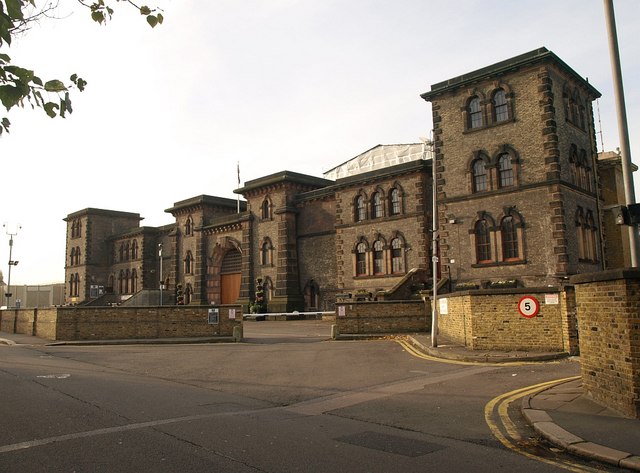London’s history is rich, colourful, and occasionally dark, with its prisons bearing testimony to the city’s tales of crime and punishment. From 12th century dungeons to modern high-security facilities, London’s prisons have borne witness to some of the most notorious criminals and infamous events in British history. Let’s embark on a journey through time and explore the history of London prisons, as well as gain an understanding of the significant role they play today.
A Short History of London Prisons
London’s prison history dates back to the early medieval era, with the original prison, the Tower of London among the earliest. Being medieval, its treatment of prisoners was usually swift and severe. Built by William the Conqueror around 1078, it served not just as a royal residence, but also as a prison for those who threatened the Crown’s security such as Anne Boleyn, who was arrested for adultery as well as Walter Raleigh, William Penn, Guy Fawkes, famously arrested for treason for the Gunpowder plot.
Newgate Prison, established in the 12th century, is another remarkable historical site. Over the centuries, it became infamous for its harsh conditions and public executions, earning a dreadful reputation until its closure in 1902.
In the Victorian era, the concept of prison underwent a significant transformation. Prisons like Pentonville, opened in 1842, were built with a focus on reform. Here, inmates were subject to solitary confinement and a strict regime, a stark contrast to the crowded, chaotic conditions of Newgate.
London Prisons Today – A Closer Look
Modern London is home to several prisons, each with its unique traits. Here are the current London prisons in operation:
- Belmarsh: Situated in proximity to London, HM Prison Belmarsh has repeatedly earned accolades as a model prison, particularly concerning health and welfare rules and standards. Notably, it is recognised for the outstanding relationships between its staff and prisoners and houses current high profile prisoners Stephen Port, Wayne Couzens and Julian Assange.
- Brixton: HMP Brixton, one of London’s oldest prisons, is now a Category C men’s prison and serves as a resettlement institution preparing inmates for reintegration into society.
- Bronzefield: Based in Ashford, Surrey, HMP Bronzefield is the largest female prison in Europe. Operated by Sodexo Justice Services, it houses adult women and young offenders.
- Coldingley: Located in Bisley, Surrey, HMP Coldingley is a Category C men’s prison, originally focusing on the training of inmates in various industrial trades.
- Downview: Situated in Sutton, HMP Downview is a women’s prison, currently undergoing refurbishment. Before its temporary closure, it was working towards aiding women in maintaining family ties and reducing reoffending.
- Feltham: HMP Feltham is situated in Feltham, West London. It’s split into two parts, Feltham A for young people and Feltham B for young adults, making it a significant institution for younger offenders.
- High Down: Based in Sutton, HMP High Down is a place for Category B prisoners, which has a strong focus on education and skills training.
- Holloway: Holloway Prison was the largest women’s prison in Europe until its closure in 2016. It has a rich history dating back to the mid-19th century and is now planned to be transformed into a mixed-use development.
- ISIS: HMP ISIS is a Category C men’s prison and Young Offender Institution located in Thamesmead. It focuses on providing an environment for positive change for young adults.
- Pentonville: Situated in Islington, HMP Pentonville is probably one of the most famous Category B prisons, holding prisoners on remand to the local courts.
- Send: HMP Send is a closed Category C women’s prison in Send, Surrey. It focuses on a wide range of work, education, and training initiatives.
- Thameside: HMP Thameside is a Category B men’s prison in Thamesmead. It offers a varied daily regime including work, education, and gym activities.
- Wandsworth: Located in Wandsworth, London, HMP Wandsworth is one of the largest prisons in the UK and holds both remand and convicted prisoners. It has the capacity to hold up to 1665 prisoners making it the biggest and busiest prison in London.
- Wormwood Scrubs: Situated in the borough of Hammersmith and Fulham, HMP Wormwood Scrubs Prison is a Category B resettlement prison. With its iconic Victorian prison building, it’s also known for its focus on work and training programs.
More Than Just Institutions
The history and development of London prisons offer more than just tales of crime and punishment. They provide us with an intricate social, political, and architectural narrative of London’s evolution. Whether it’s the reformative aura of Pentonville, the historical prominence of the Tower of London, or the ongoing changes at Holloway, each institution contributes to the fascinating and diverse tapestry of London’s heritage.
Uncover more fascinating insights about London prisons, their histories, and their current roles within the UK’s justice system with us.







